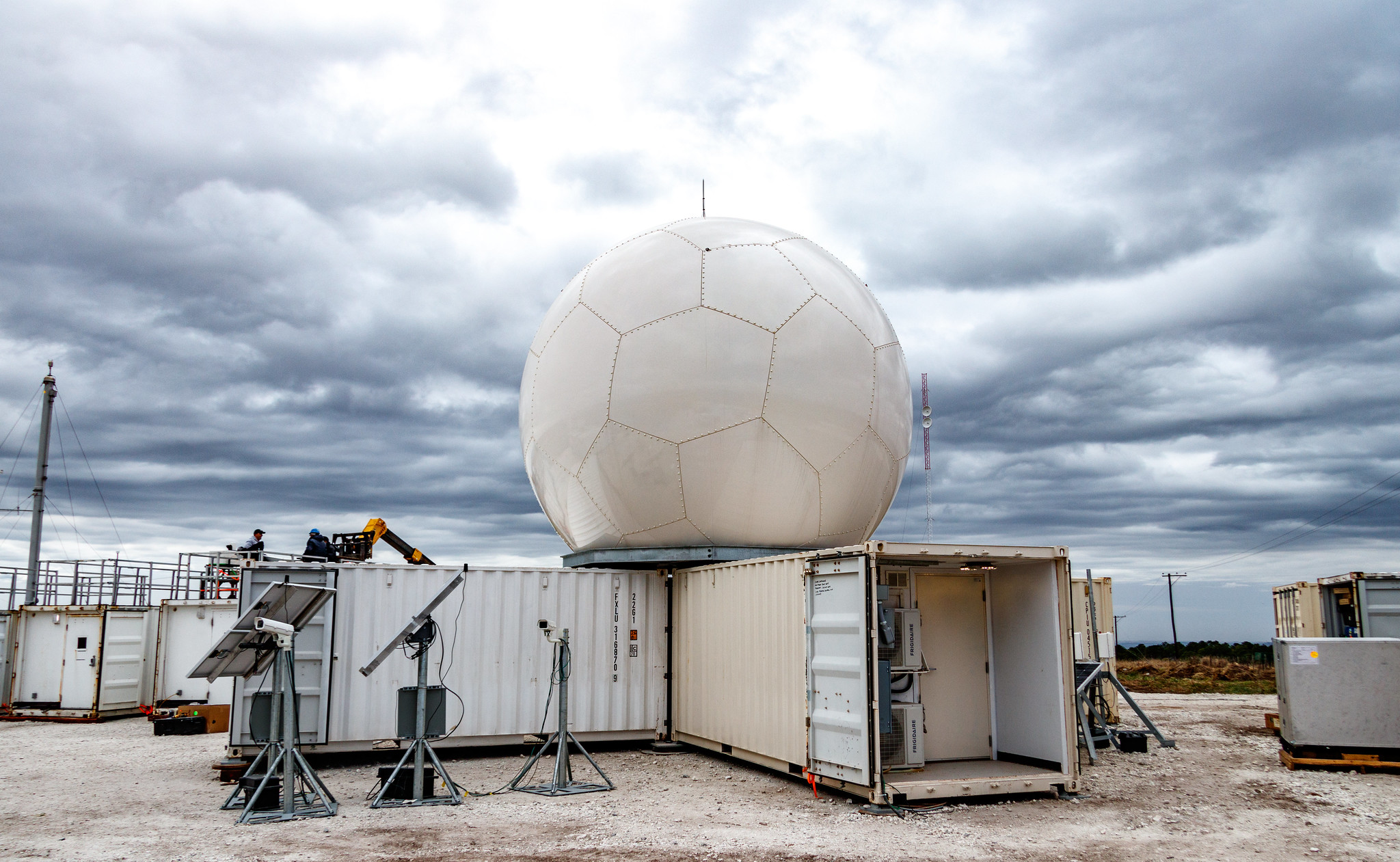
CSAPR
C-Band Scanning ARM Precipitation Radar
Baseline Instrument, Guest
The C-Band Scanning ARM Precipitation Radar is a dual-polarization Doppler weather radar that operates in a simultaneous transmit and receive (STAR) mode, splitting the transmit signal so that power is transmitted on both horizontal and vertical polarizations at the same time. The CSAPR can also transmit on a single polarization (horizontal or vertical) and measure linear depolarization ratio (LDR).
In addition to the first three Doppler moments (reflectivity, radial velocity, and spectra width), the CSAPR also provides differential reflectivity, correlation coefficient, and specific differential phase. The dual-polarization variables enable the provision of rainfall rate estimates and identification of precipitation types.
For the 2018–2019 Cloud, Aerosol, and Complex Terrain Interactions (CACTI) field campaign in Argentina and the 2021–2022 TRacking Aerosol Convection interactions ExpeRiment (TRACER) in the Houston, Texas, area, ARM deployed a second-generation CSAPR, known as CSAPR2. CACTI and TRACER data from the CSAPR2 are now available as b1-level products. Building on the original operational data from these campaigns, the b1-level products feature improved data quality resulting from extensive analyses and corrections. The data are cross-calibrated to a common point, datastreams are corrected for operational issues that occurred during the campaign, and several data quality masks and basic derived products are incorporated. For more information, read the b1-level processing reports for CACTI and TRACER.
Primary Measurements
Contact
View all contacts-
Ya-Chien FengLead Mentor Pacific Northwest National Laboratory
Related Data Announcements
References
View all references- Theisen et al. ARM FY2022 Radar Plan. 2021. 10.2172/1826575.
Locations
Keep up with the Atmospheric Observer
Updates on ARM news, events, and opportunities delivered to your inbox
ARM User Profile
ARM welcomes users from all institutions and nations. A free ARM user account is needed to access ARM data.


















